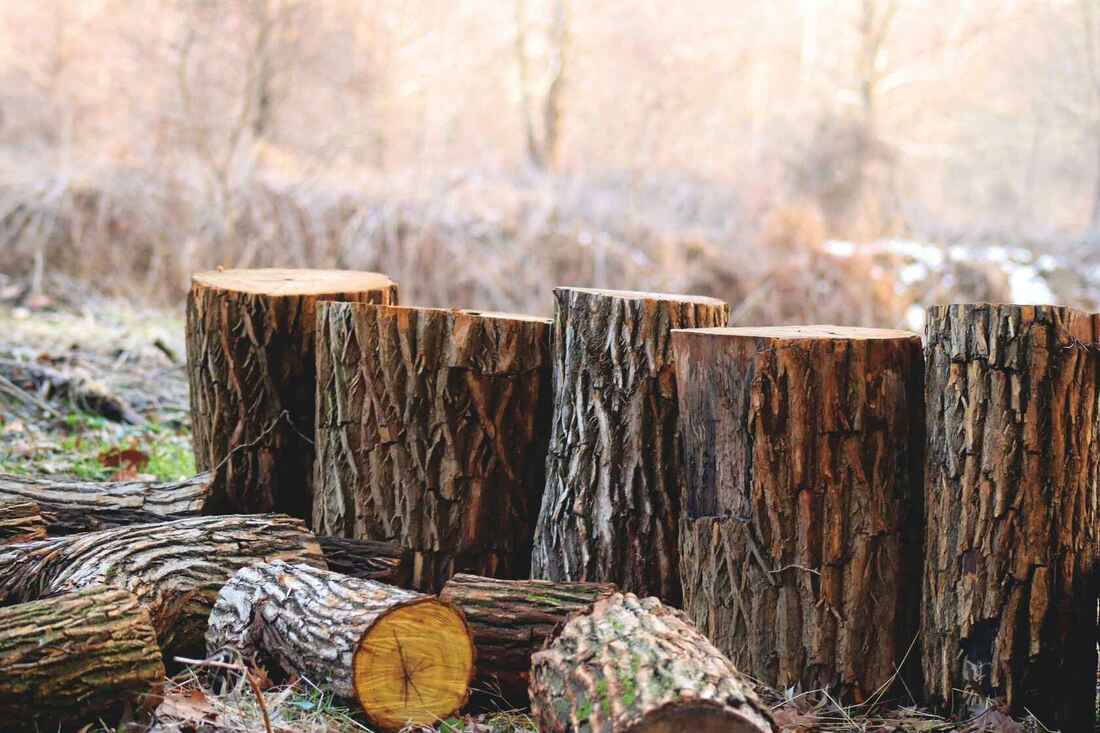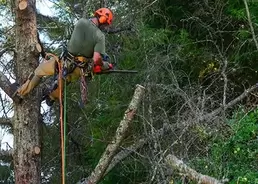 Tree service is an essential aspect of maintaining healthy and beautiful landscapes in West Chester, OH. However, timing plays a crucial role in ensuring the success of tree care efforts. Understanding the best time of the year for tree service can help property owners make informed decisions and maximize the benefits of their investment. Spring: The Season of Renewal Spring is a rejuvenating time for pruning and trimming trees in West Chester, OH. As temperatures rise and daylight hours increase, trees begin to emerge from their winter dormancy. This period of rapid growth makes spring an ideal time for tree trimming and pruning. During spring, trees allocate energy towards producing new foliage and branches. By removing dead or overgrown limbs, property owners can promote healthy growth and shape the trees to their desired aesthetic. Spring pruning also helps improve air circulation and sunlight penetration, reducing the risk of fungal diseases and promoting overall tree health. Summer: Vigilance Against Pests and Diseases Summer brings warmth and vitality to West Chester, OH, but it also brings potential threats to tree health. With lush foliage providing ample cover, summer is the perfect time for tree inspections and pest management. Inspecting trees for signs of pests or diseases during summer can help identify issues early and prevent them from spreading. Common pests in West Chester, OH, include emerald ash borers, Japanese beetles, and tent caterpillars. By monitoring trees closely and taking proactive measures such as pruning infested branches or applying pesticides, property owners can safeguard their trees from harm. Fall: Planting for the Future Autumn heralds its arrival in West Chester, OH, with its cooler temperatures and shorter daylight hours, painting the landscape with vibrant hues and presenting an opportune time for tree planting and root care. This season is widely regarded as the prime time for tree installation due to favorable weather conditions and the natural rhythm of tree growth. Planting trees during the fall allows them to establish robust root systems before winter's dormancy sets in. The cooler temperatures and increased moisture create an optimal setting for root development, providing newly planted trees with the ideal conditions for survival. Moreover, fall planting alleviates stress on trees compared to planting in spring or summer, as they can concentrate on root growth without the added demand of sustaining new foliage. Winter: Preparation and Maintenance Winter may seem like a dormant period for trees, but it is an opportune time for tree removal and major pruning in West Chester, OH. With deciduous trees shedding their leaves, winter offers clearer visibility and easier access to tree structures. Removing dead, diseased, or damaged branches during winter helps improve tree health and safety. Winter storms and heavy snowfall can weaken branches, increasing the risk of breakage and property damage. By pruning trees in winter, property owners can mitigate these risks and prepare their landscapes for the challenges of the upcoming seasons. Choosing the right time of the year for tree service in West Chester, OH is essential for maintaining healthy and vibrant landscapes. From spring pruning to fall planting and winter maintenance, each season offers unique opportunities to care for trees and ensure their long-term vitality. By understanding the seasonal needs of trees and scheduling tree services accordingly, property owners can enjoy beautiful, thriving landscapes year-round.  If you've recently undergone a tree removal process on your property, you might be curious about the timeline for the ground to settle. The aftermath of tree removal can often leave behind noticeable changes in your landscape. Let's explore the factors influencing how long it takes for the ground to settle after tree removal and what you can expect during this period. 1. Immediate Impact of Tree Removal After a tree is removed, the ground undergoes immediate changes. The absence of the tree's root system can cause the soil to become unsettled and uneven. Moreover, the process of stump removal and stump grinding can further disrupt the soil, creating voids and compacting it in the process. 2. Soil Composition and Settling Time The type of soil on your property plays a significant role in determining the settling time after tree removal. Sandy soils typically settle more quickly than clay soils. Sandy soils have larger particles that allow for better drainage, facilitating faster settling. In contrast, clay soils have smaller particles that compact tightly and may take longer to settle. 3. Depth and Spread of Root System The depth and spread of the tree's root system can influence how long it takes for the ground to settle. Trees with extensive root systems may leave behind larger voids, prolonging the settling process. Conversely, trees with shallower root systems may cause less disturbance to the soil, leading to quicker settling. 4. Climate and Weather Conditions Weather conditions also impact ground settling after tree removal. Wet or rainy weather can delay settling by saturating the soil and hindering compaction. Conversely, dry weather promotes faster settling by allowing the soil to dry out and compact more efficiently. 5. Size and Age of the Tree The size and age of the tree were removed to affect the settling time. Larger, older trees typically have more extensive root systems, resulting in larger voids and longer settling times. Younger or smaller trees may cause less disturbance and settle more quickly. 6. Post-Removal Landscaping and Soil Stabilization The steps taken after tree removal can influence settling time. Replanting grass or other vegetation can aid in stabilizing the soil and promoting settling. Additionally, adding mulch or compost can improve soil health and expedite the settling process. Professional soil stabilization techniques, such as aeration or adding soil amendments, can also accelerate settling. 7. Monitoring and Patience Overall, the settling process after tree removal requires monitoring and patience. While some settling may occur relatively quickly, complete stabilization of the ground may take several months to a year, depending on various factors. Regular observation of the site and proper maintenance can help ensure successful settling and restore your landscape to its desired state. The timeline for ground settling after tree removal is influenced by soil composition, root system depth, climate conditions, tree size, post-removal landscaping, and soil stabilization efforts. By understanding these factors and practicing patience, you can navigate the settling process effectively and restore your landscape to its former beauty.  Trees are not just beautiful additions to our landscapes; they play a crucial role in maintaining soil health and stability. However, there are times when tree removal becomes necessary, whether due to safety concerns, landscaping plans, or disease. But have you ever wondered what happens to the ground when you remove a tree? Let's delve into the fascinating effects tree removal can have on the soil beneath. 1. Impact on Soil Structure When a tree is removed, its extensive root system, which helps in aerating the soil and preventing erosion, is also taken away. This can lead to a significant impact on the soil structure, causing it to become compacted over time. 2. Soil Erosion and Compaction One of the immediate effects of tree removal is the increased risk of soil erosion. Without the tree's roots holding the soil in place, rainfall and wind can easily wash away topsoil, leading to erosion. Additionally, heavy machinery used during stump removal and stump grinding can further compact the soil, making it harder for water and nutrients to penetrate. 3. Loss of Nutrients Trees play a vital role in nutrient cycling, absorbing essential nutrients from the soil and returning them when leaves and branches decompose. With the removal of a tree and subsequent stump removal and grinding, there is a loss of nutrients as these processes are disrupted, potentially affecting the fertility of the soil. 4. Changes in Groundwater Levels The roots of trees also play a crucial role in regulating groundwater levels. When a tree is removed, there may be fluctuations in groundwater levels, leading to changes in the water table and potentially affecting nearby vegetation. 5. Impact on Surrounding Vegetation The removal of a tree can also have indirect effects on surrounding vegetation. Trees provide shade and shelter for other plants, and their absence can expose delicate plants to harsh sunlight and wind, affecting their growth. 6. Soil Compaction and Settling After tree removal and stump removal, the soil may undergo compaction and settling as the space previously occupied by the roots collapses. This can lead to uneven ground and may require additional landscaping to restore. 7. Environmental Consequences Beyond the immediate effects on soil and vegetation, tree removal can have broader environmental consequences. It may disrupt local ecosystems, affecting wildlife habitats and biodiversity. 8. Strategies for Mitigation To mitigate the adverse effects of tree removal and stump removal on the ground, several strategies can be employed. These include replanting trees to restore soil stability, implementing erosion control measures, and regularly aerating the soil to improve its structure. The removal of a tree and subsequent stump removal and stump grinding can have significant implications for the ground beneath. From soil erosion and compaction to loss of nutrients and changes in groundwater levels, the effects of tree removal are wide-ranging. However, with careful planning and implementation of mitigation strategies, it is possible to minimize these impacts and preserve soil health for future generations |
AuthorGrace Tree Service Archives
February 2024
Categories
All
|
|
|

 RSS Feed
RSS Feed